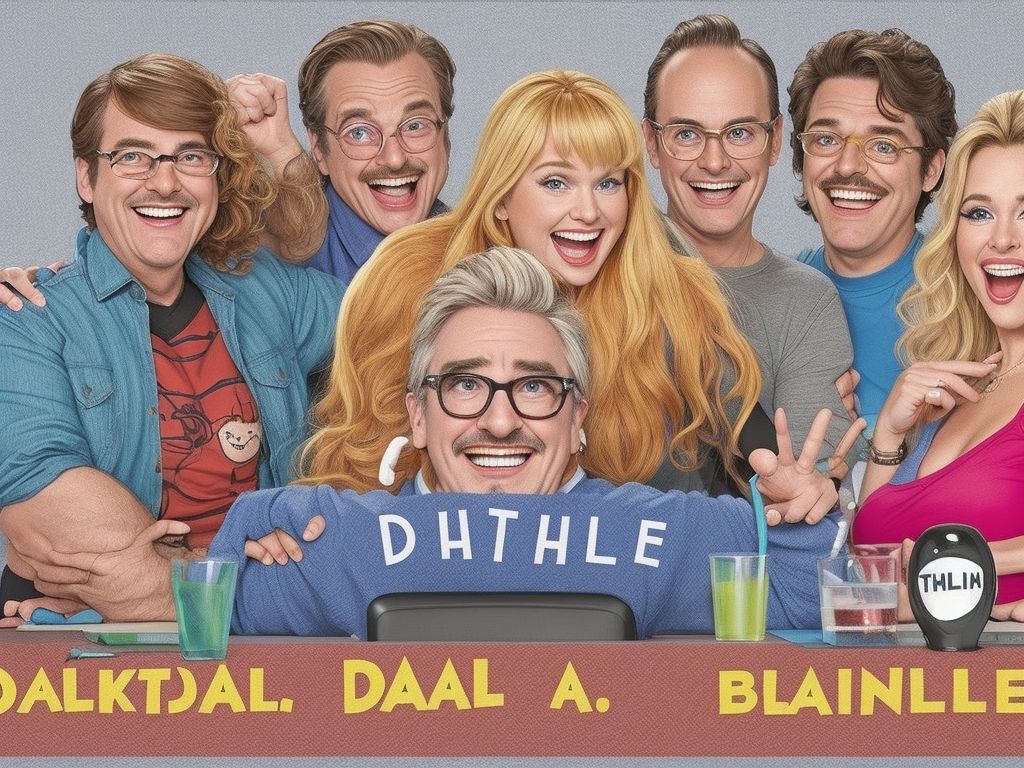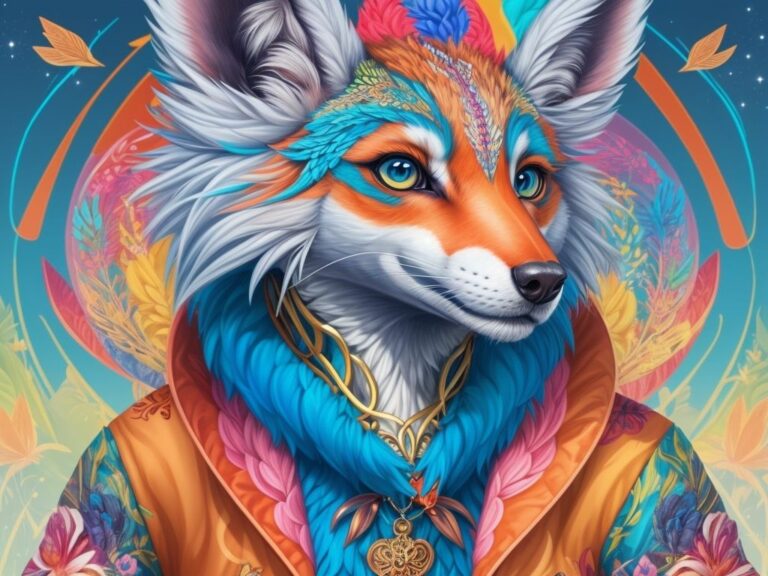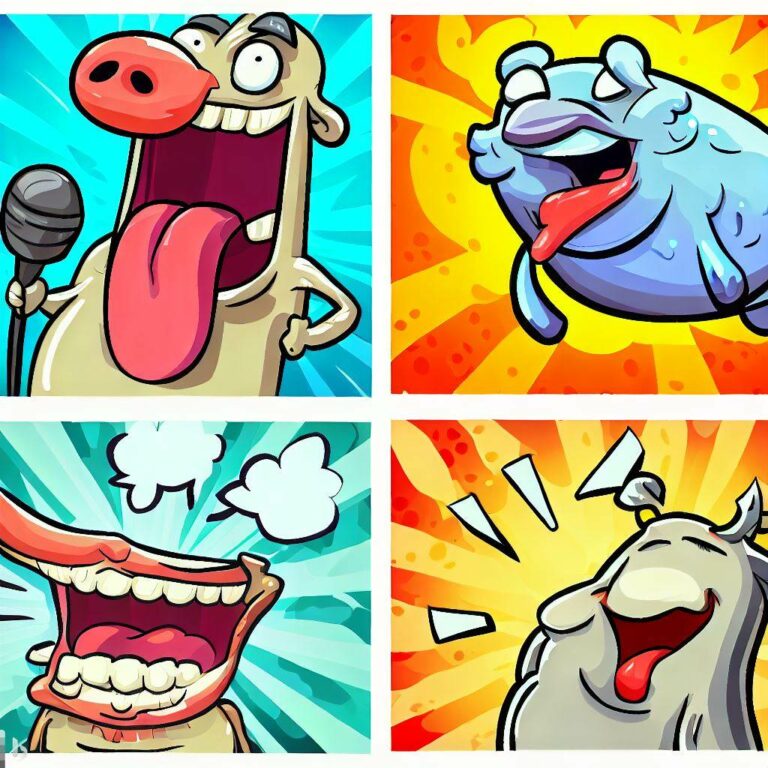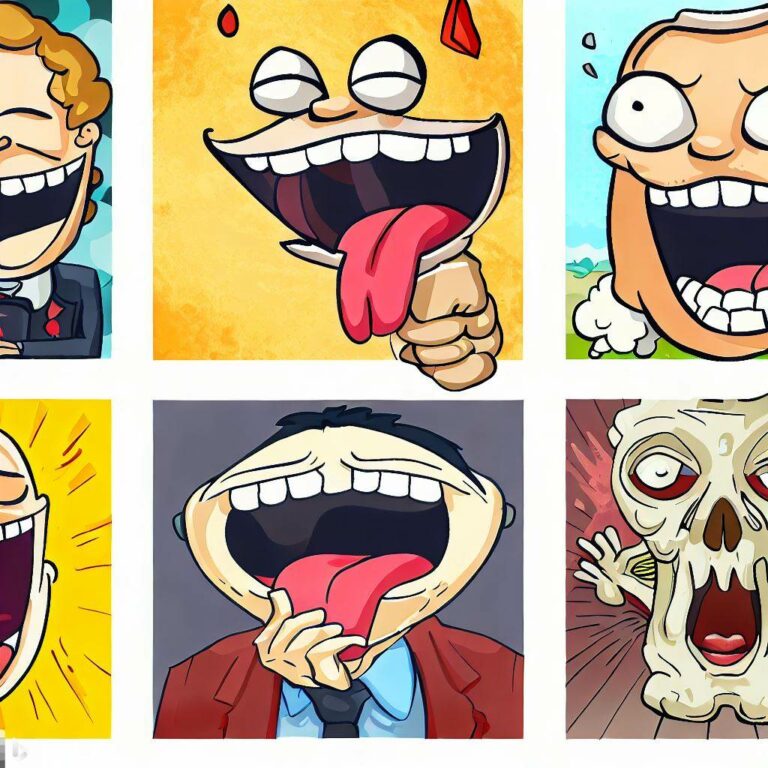Exploring Different Types of Humor: From Dark to Light-hearted

Humor – it’s been around forever! It’s a universal language that brings people together. There are two types – dark and light-hearted. Dark humor is all about satire, sarcasm, and irony. It pushes boundaries and challenges taboos. On the other hand, light-hearted humor is more playful and innocent – puns, slapstick comedy, and wordplay!
Humor has been used to cope with tough times. Ancient Greek comedies, Shakespearean plays, and comedic relief in war or hardship – it’s all about finding joy in despair.
Dark humor may not be for everyone, but those who do get it, really get it. It’s an acquired taste – deliciously twisted!
Understanding Dark Humor
To understand dark humor, dive into its definition and characteristics, explore its historical and cultural influences, and discover its presence in literature, film, and comedy. By delving into these sub-sections, you’ll gain a comprehensive understanding of the nuances and context surrounding this unique form of humor.
Definition and Characteristics of Dark Humor
Dark humor is a unique form of comedy that explores taboo topics and makes light of dark or unsettling subjects. It uses irony, sarcasm, and satire to evoke both laughter and uneasiness. Unlike traditional humor, dark humor pushes boundaries and challenges societal norms, making us question our own views and beliefs.
One of its key traits is the ability to find humor in typically serious or sensitive circumstances. It brings levity to death, tragedy, and disease, offering a release from the heaviness of life’s struggles.
Dark humor also has a subversive nature. It uses wit and wordplay to challenge authority figures and mock societal conventions. This type of comedy thrives on pushing boundaries and questioning the status quo, making it an effective tool for social commentary.
Also, dark humor has an element of surprise. Its unexpected twists and turns catch us off guard, producing laughter even when we least expect it. By defying expectations and playing with our emotions, dark humor creates a tension that adds to its comedic impact.
To understand and appreciate dark humor, here are a few tips:
- Open-Mindedness: Dark humor often deals with controversial topics that can be sensitive. To engage with it, approach it with an open mind. This way, you can enjoy the complexity of each joke without dismissing it due to initial discomfort.
- Recognize Intent: Dark humor should provoke thought and challenge norms, not offend or belittle. By understanding the intention behind each joke or comedic act, we can comprehend the message being conveyed.
- Consider Context: When encountering dark humor, consider the context in which it is presented. Comedy clubs provide a space where individuals can explore these topics. However, sharing jokes in inappropriate settings may lead to negative reactions.
By following these suggestions, we can navigate the complex world of dark humor with sensitivity and understanding. Ultimately, embracing this form of comedy allows us to confront uncomfortable truths and foster meaningful conversations about the complexities of human existence.
From medieval jesters to modern stand-up comics, dark humor has been making people laugh…and question their moral compass…since the beginning of time.
Historical and Cultural Influences on Dark Humor
Dark humor has been shaped by history and culture. War, natural disasters, and taboos have all had an influence.
In times of conflict, like WW2, people used dark humor to cope. Natural disasters, like earthquakes or hurricanes, also led to dark jokes as a way to come together.
Cultures shape dark humor too. What’s taboo in one place might be funny to another. Death and illness may be off-limits in one society, and openly joked about in another. This creates variations in dark humor across regions.
The 1950s saw Lenny Bruce as a key figure of dark humor. He pushed boundaries with his satire on race, religion, and politics. He showed how comedy can be a tool for social commentary.
Frankie Boyle is another comedian who uses dark humor. His punchlines explore sensitive topics. He shares a story about attending Churchill’s grandson’s funeral. Even in grief, people connected through dark humor.
Death and laughter go together – like that clown after tripping over a banana peel!
Examples of Dark Humor in Literature, Film, and Comedy
Dark humor is found in many forms of entertainment, such as literature, film, and comedy. Let’s explore a few examples that show its unique blend of wit and darkness.
- Joseph Heller’s novel “Catch-22” is a great example of dark humor in literature. It satirizes war’s absurdity and bureaucracy with its darkly comedic depiction of military life.
- In film, Stanley Kubrick’s “Dr. Strangelove or: How I Learned to Stop Worrying and Love the Bomb” is a classic dark comedy. It parodies the Cold War era and nuclear paranoia with its ironic and humorous portrayal of political leaders.
- George Carlin was a stand-up comedian known for his sharp wit and controversial humor. His routine pushed boundaries and made audiences laugh at the same time.
Dark humor can be found in many other mediums, too. One example of its power is Kurt Vonnegut’s novel “Slaughterhouse-Five.” Vonnegut was a prisoner of war during World War II and was inspired by the bombing of Dresden. His book combines elements of science fiction and black humor to depict war’s absurdity and tragedy.
Dark humor gives us a chance to learn about serious or taboo topics through laughter. It is a powerful tool that can challenge societal norms and make us think about uncomfortable truths.
Light-hearted Humor: Exploring the Lighter Side
To explore the lighter side of humor, delve into light-hearted humor, including its definition and characteristics. Discover different types of light-hearted humor, such as puns, slapstick comedy, and wordplay. And uncover the psychological benefits that light-hearted humor brings.
Definition and Characteristics of Light-hearted Humor
Light-hearted humor brings joy and laughter without being offensive. It uses wit, cleverness, and puns to create a light atmosphere. This type of humor often involves jokes, wordplay, and funny situations.
Light-hearted humor aims to make us laugh with its clever use of language and unexpected twists. It helps us see the lighter side of life and find joy in everyday moments.
A unique characteristic of this humor is its ability to diffuse tension and bring people together. With witty one-liners or amusing anecdotes, it can create shared laughter.
To appreciate light-hearted humor, it’s important to have an open mind and a willingness to embrace silliness. This can greatly enhance one’s happiness and well-being. So why not give yourself permission to indulge in some fun?
Next time you come across a joke or funny story, take a moment to appreciate the charm of light-hearted humor. Laugh freely without restraint. Embrace the joy it brings and cherish those moments of pure laughter! Let’s add some lightness into our lives with a good measure of lighthearted humor!
Different Types of Light-hearted Humor (e.g., puns, slapstick comedy, wordplay)
Light-hearted humor brings joy and laughter to our lives, with forms such as puns, slapstick comedy, and wordplay. Here are five to explore:
- Puns: Clever wordplays that create humor through multiple meanings or sounds.
- Slapstick Comedy: Physical comedy with exaggerated actions.
- Wordplay: Clever use of words in a witty or humorous way.
- Parody: Imitates or mocks another work in a humorous manner.
- Satire: Uses irony, sarcasm, and ridicule to expose vices.
Plus, situational comedy, observational humor, and self-deprecating jokes also add to our understanding of humor. I once attended a stand-up comedy show where the comedian used wordplay. His punchlines left the audience roaring with laughter. A memorable night full of joy and lightheartedness.
Laughter is a great way to distract from problems and enjoy a good show!
The Psychological Benefits of Light-hearted Humor
Laughter is known to be good for our mental health. It helps us feel relaxed, boosts our mood, and increases social connection. It also makes us more emotionally resilient.
We experience this benefit when our bodies release endorphins – natural chemicals that make us happy. So, by laughing more, we can lower stress and its bad effects.
Humor can also lift our spirits and make us see the brighter side of things. Plus, it brings people together and creates trust and intimacy.
If you want to laugh more, find comedy shows or podcasts that make you laugh. Spend time with people who have a good sense of humor. And don’t forget the power of self-deprecating humor. It teaches us humility and helps us navigate life’s challenges.
Exploring Different Types of Humor Across Cultures
To explore different types of humor across cultures, delve into the cultural differences in humor and discover examples of humor in different cultures. Cultural differences and examples of humor will shed light on the diverse approaches to comedy around the world.
Cultural Differences in Humor
Cultural differences in humor are captivating. Each culture has its own style and what they find funny. Let’s take a peek at these variations!
American humor is satire; British humor is dry wit; Japanese humor involves puns; Indian humor is slapstick comedy; and Russian humor is dark.
It’s amazing to see the diversity of humor, which reveals each culture’s values and background. By discovering different types of humor, we understand each culture better and share our human experience.
Don’t miss out on this incredible journey! It will increase your cultural knowledge and open your mind. Let’s unravel the tapestry of global humor – where laughter has no limits. From British wit to American comedy, humor is like passports – it changes with cultures, but still brings people together.
Examples of Humor in Different Cultures
Humor is an interesting part of culture that differs greatly between societies. It shows the values, norms, and ideas that are particular to a certain group. Understanding and liking diverse types of humor from different cultures can provide knowledge into their customs and traditions.
Examples of Humor in Different Cultures:
- Self-deprecating humor is used in American culture to lighten the mood and show humility. Americans like to joke about their own flaws or embarrassing moments.
- British culture values dry humor. It is usually serious or simple-sounding on the surface but has something witty or double-meaning hidden inside. To understand this kind of humor, you need to be sharp and recognize subtle differences.
- Japanese comedy uses puns and wordplay. The traditional form of storytelling called Rakugo has verbal jokes and exaggerated expressions for entertainment.
- Germans often have schadenfreude in their humor. This means finding pleasure in other people’s troubles or mistakes. German jokes usually revolve around unlucky events.
- In Indian culture, they favor slapstick comedy. Bollywood films have physical comedy with big gestures, facial expressions, and comedic timing.
It’s important to remember that these examples are not absolute for each culture.
To enjoy humor from different cultures:
- Learn about their customs and traditions. Understanding the context behind their jokes will help you appreciate them more.
- Be open to diverse styles. Different cultures have their own ideas of what is funny. Take it without judgment.
- Know key phrases or words. Being familiar with language basics can help you understand puns or wordplay that is unique to a culture.
- Watch and learn from locals. Speak to people from different cultures and observe how they show humor. Take cues from their reactions and adjust your behavior.
- Share your culture’s humor. By talking about your own jokes and funny stories, you create an opportunity for cultural exchange and better connections.
Seeing the humor in different cultures can be a happy experience that helps us understand and accept each other. So, let’s enjoy the laughter that crosses borders!
The Role of Humor in Society
To understand the role of humor in society, delve into the functions of humor, such as social bonding, coping mechanism, and satire. Additionally, explore humor’s presence in media and advertising. Discover how different types of humor contribute to shaping our collective laughter and influencing our perceptions.
Humor is incredibly important in human interactions, enabling social bonding, offering a coping mechanism, and even serving as satire. Here are three ways humor is used:
- Social Bonding: Laughter brings folks together. Sharing a good laugh can bond people and create unity.
- Coping Mechanism: In hard times, humor helps us cope. It offers a way to ease tension and stress, and adapt to challenging times.
- Satire: Humor can be commentary on society. By using irony and exaggeration, it reveals flaws or wrongs, prompting critical thinking.
Plus, humor breaks down barriers. It helps folks from diverse backgrounds connect, regardless of culture or language.
To get the most out of humor, there are some tips:
- Timing is key: Knowing when to joke is crucial. Make sure the context is right to avoid any mishaps.
- Know your audience: Adapting humor to suit the crowd is important. Consider their norms, beliefs, and sensitivities when crafting content.
- Respect boundaries: Humor should never be at the expense of others. Be aware of societal taboos to keep interactions respectful.
By following these pointers, one can harness the power of humor. In the end, humor can foster laughter and joy, contributing positively to social connections and emotional well-being.
Humor in Media and Advertising
Humor is a major player in our society. When it comes to media and advertising, humor can be an effective tool to grab attention and engage audiences. Here are 4 key points highlighting the significance of humor in media and advertising:
- Humor grabs attention. Incorporating humor in ads and media content quickly captures people’s attention in today’s digital world. Funny commercials or witty social media posts make us stop scrolling and pay attention.
- Memorable brand messaging. Using humor helps brands create memorable experiences for consumers. When a funny ad makes us laugh, we’re more likely to remember the brand behind it. This connection builds brand awareness and recognition.
- Emotional connection. Humor has the power to evoke positive emotions and make people feel good about a brand or product. When an ad successfully tickles our funny bone, it leaves a lasting positive impression, fostering an emotional connection with the audience.
- Viral potential. Funny ads often go viral on social media platforms, reaching millions of people quickly. The shareability of humorous content makes it attractive for brands as it increases their chances of reaching a wider audience organically.
In addition to these points, it is important to consider unique details to enhance the impact of humor in media and advertising. Cultural relevance is key. Humor works best when it aligns with the cultural background and preferences of the target audience. Ads must consider cultural nuances to avoid being offensive or insensitive.
Here are some tips to effectively use humor in media and advertising campaigns:
- Know your audience. Understand your target demographic’s sense of humor to create content that resonates with them. Conduct market research to get insights into what your audience finds funny and incorporate those elements into campaigns.
- Storytelling with humor. Instead of one-off jokes, brands should use humor to tell interesting stories that engage and captivate the audience. This allows for a deeper connection and keeps the audience invested in the narrative.
- Be authentic. Authenticity is vital when it comes to using humor in advertising. Brands should ensure that their humor aligns with their overall brand image and values. Avoid any attempts at being funny that may come across as forced or insincere.
- Test and iterate. To gauge the effectiveness of humorous content, brands should conduct regular testing and gather feedback from their target audience. This helps refine humor-based campaigns and optimize them based on what resonates best.
By following these suggestions, brands can use the power of humor in media and advertising to engage audiences, create memorable brand experiences, foster emotional connections, and achieve greater reach through viral content. There’s a diverse range of humor styles, from dark humor to slapstick comedy, so society never runs out of ways to make fun of itself.
Conclusion: The Importance of a Diverse Range of Humor Styles
Humor comes in many forms – some dark, some light-hearted. Having a variety of humor styles is essential. It helps us express our creativity and connect with others. This article examined different types of humor and highlighted how important it is to embrace them.
Dark humor can be hard to understand and appreciate. It involves finding amusement in topics that are often considered taboo or sensitive. Although it may not be everyone’s cup of tea, dark humor works as a coping mechanism for some. It helps people survive tough situations and make light of life’s hardships. By recognizing and accepting this style of humor, we create an environment where everyone can express themselves.
On the other hand, light-hearted humor brings joy and laughter. From puns to one-liners, this style makes us smile and lifts our spirits. It helps us appreciate simple pleasures and find joy in everyday moments. Embracing light-hearted humor promotes positivity and brings people together through shared laughter.
Humor is subjective. What’s funny to one person may not be to another. So, having different types of humor ensures there’s something for everyone to enjoy. It fosters inclusivity and creates spaces where people are free to express themselves without fear.
I remember an incident that shows the power of varied humor styles. On a trip abroad, I was in a community where language was a barrier. But, through visual comedy, I connected with locals. This proved that comedy has no boundaries.
In conclusion, we should never underestimate the importance of different humor styles. They let us express ourselves, foster inclusivity, and create connections between us. Let us celebrate the variety of humor styles and enjoy their joy.
Frequently Asked Questions
1. What is dark humor?
Dark humor is a type of comedy that focuses on sensitive or taboo topics, using them to provoke laughter. It often involves jokes about subjects such as death, illness, or tragedy.
2. Is dark humor offensive?
Dark humor can be offensive to some people, as it tends to push boundaries and challenge societal norms. However, what one person finds offensive, another may find amusing. It’s important to be mindful of your audience and the context in which you use dark humor.
3. What are some examples of light-hearted humor?
Light-hearted humor refers to comedy that is gentle, playful, and relatively harmless. It includes jokes that revolve around everyday situations, funny anecdotes, or witty one-liners that bring a smile to people’s faces.
4. Can dark humor be therapeutic?
Yes, for some people, dark humor can be a way to cope with difficult or uncomfortable situations. It can provide a sense of relief or release tension by finding humor in the absurdity of life’s challenges.
5. Are there any risks associated with using dark humor?
While dark humor can be a coping mechanism, it is essential to consider its potential impact on others. It can be triggering or offensive to individuals who have personal experiences related to the topic being joked about. It’s crucial to be empathetic and sensitive when using dark humor.
6. Are there different cultural interpretations of humor?
Absolutely! Humor varies greatly across cultures. What may be considered funny in one culture may not be amusing in another. Cultural nuances, values, and experiences influence the perception and interpretation of different types of humor.
- What Polls Reveal About Sleeping Together Early and Long-Term Relationship Success - July 7, 2025
- How to Design a Hard Harry Potter Trivia Challenge - October 4, 2023
- How to Design a Dear Peachie Makeup Preference Poll - October 4, 2023











